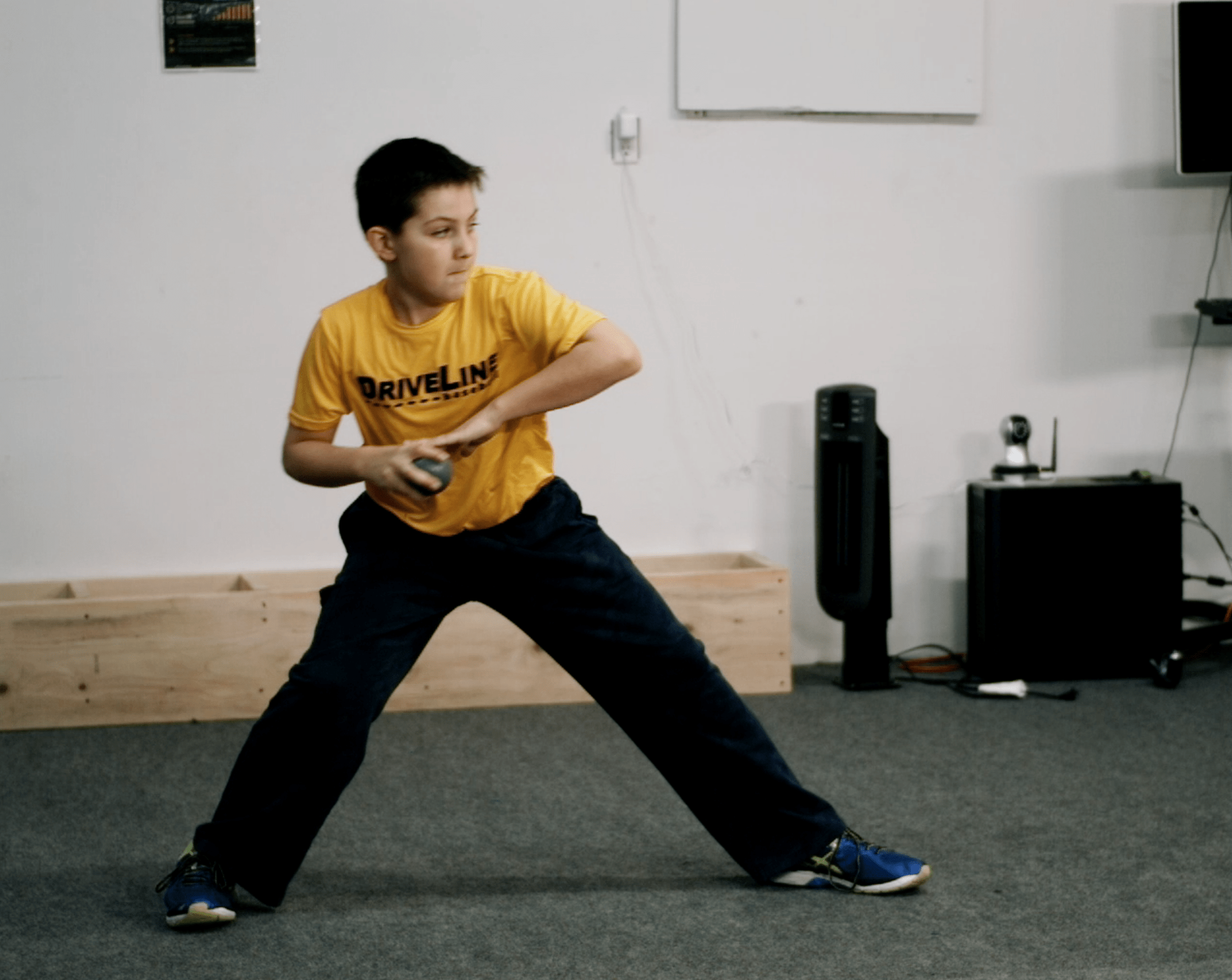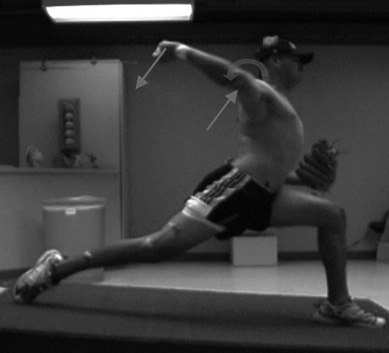Mechanics: The Effects of Loading Rate

Just wanted to drop a short post in about loading rate as it relates to the humerus and possibly the connective tissue in the pitching arm during the throwing motion.
In Humeral Torque in Professional Baseball Pitchers, Sabick et al. concluded that “pitchers who elbows were more extended at stride foot contact tended to have lower peak humeral torques.”
So, in theory, an extended elbow at foot contact but prior to the maximum external rotation would decrease stress on the humerus. Remember that in Correlation of Throwing Mechanics With Elbow Valgus Load in Adult Baseball Pitchers by Aguinaldo et al. that increased elbow flexion was closely related to reducing valgus torque, so an extended elbow throughout the motion is not necessarily ideal.
Also notable is the fact that bone is sensitive to loading rate and not just peak values of stress – therefore, the faster and harder the humerus (and the connective tissue) is loaded, the more danger there is with regard to injury.
Many people focus on the total load and stress on the bone or connective tissue as the failure point of the body’s working parts and pieces, and indeed many laboratory (in vitro) studies simulate only this variable. As Sabick et al. pointed out in the aforementioned paper:
Simply comparing dynamic pitching biomechanics data to bone strength data from in vitro studies is actually over-simplifying the problem. Bone strength is sensitive to loading rate. Differences between loading rates in the laboratory and those occurring during pitching suggest that the data are not directly comparable. In addition, simple torsion is generally simulated in laboratory tests, but the situation is much more complicated in vivo. There are additional components of force and torque acting on thehumerus at the same time the humeral torque peaks. All of the force and moment components contribute to the state of stress in the bone,which changes as a function of time.
As I have often said, Humeral Torque in Professional Baseball Pitchers is one of the most influential papers written about pitching biomechanics as it relates to how we train and instruct our clients. For more information, check out our Pitching Program and see if it’s right for you. As you talk to coaches and other instructors, ask them about the this paper, or simply ask them what research papers and scientific principles have guided their methods.
Comment section
Add a Comment
You must be logged in to post a comment.

Monday(ne) « A Cat Named Steve -
[…] mechanics make it safer to throw a baseball (an extremely un-natural & violent motion), but this is way over my head. Anybody ever play any of the Commander Keen games? How about the original Duke Nukem? I only just […]
Trip Somers -
I would love to read the entire article (Correlation of Throwing Mechanics With Elbow Valgus Load in Adult Baseball Pitchers by Aguinaldo et al.) because the abstract is a mess.
For example, here are two quotes from it that seem to contradict each other:
-“Fourteen pitchers displayed a sidearm delivery and had significantly higher elbow valgus torques than did those with an overhand arm slot position.”
-“Sidearm pitchers appeared to be more susceptible than overhand pitchers to reduced elbow valgus torque.”
What does “susceptible to reduced elbow valgus torque” mean in the context of this study?
Kyle -
I haven’t actually read the abstract; that is a bit confusing. The study does make it a lot more clear. This is yet another reason why reading abstracts is not a substitute for actually reading the research paper.
Rick -
The papers that I have read by Aguinaldo have been very poorly written. I am not familiar with the one you’re referencing, but I suspect it follows the trend of his other publications. He did/does have a large grant from MLB, however, so he must, at least, be persuasive enough to convince the powers that be to give him some money.
Link: The Effects of Loading Rate « Strike Three Mechanics -
[…] https://www.drivelinebaseball.com/2010/03/07/mechanics-the-effects-of-loading-rate/ […]
Strasburg, The Inverted W, and Pitching Mechanics | Driveline Baseball -
[…] of injury. Well, that’s not entirely true. In a previous post on this blog, I detailed how bone is sensitive to loading rate. Sabick et al. also determined in Humeral Torque of Professional Baseball Pitchers that
Arnel Aguinaldo -
‘@Trip Yes you are correct. The statement that sidearm pitchers are “more susceptible to reduced elbow valgus torque” is contradictory and confusing because it is wrong. It was a typo in the original abstract that was later corrected (it is actually “higher” not “reduced”). Here’s a link to updated one:
https://sdchp.com/AJSM_2009.pdf
Why it’s Called the “Inverted W” and Not the “M” | Driveline Baseball -
[…] enough research to even come to a reasonable conclusion. There are research studies showing that a more extended elbow at foot contact leads to lower humeral torques, but mechanical tweaks like this can cause kinks in the sequencing of body parts in an efficient […]
Why it's Called the "Inverted W" and Not the "M" - Driveline Baseball -
[…] enough research to even come to a reasonable conclusion. There are research studies showing that a more extended elbow at foot contact leads to lower humeral torques, but mechanical tweaks like this can cause kinks in the sequencing of body parts in an efficient […]